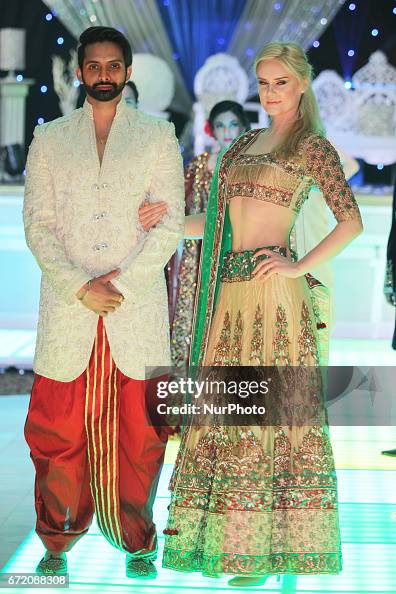Top 10 Eastern Wear Pakistan Brands You Required to Know About
Top 10 Eastern Wear Pakistan Brands You Required to Know About
Blog Article
Open the Tricks of Classic Eastern Put On
Checking out the enigmatic realm of ageless Eastern wear digs into a realm where background, society, and artistry assemble to produce garments that go beyond plain textile and string. The elaborate tapestry of practice intertwined with modern elements uses a glimpse right into a globe where every stitch informs a story, every theme a sign of value. Unveiling the keys behind these developments reveals a tapestry of heritage waiting to be deciphered, welcoming one to trip via the aerial charm and mystique of Eastern fashion.
History of Eastern Fashion
The history of Eastern fashion go back centuries, showing the abundant social heritage and traditions of varied regions throughout Asia. Each region flaunts its distinct designs, fabrics, and designs that have actually been influenced by aspects like climate, religion, social status, and trade courses. eastern wear pakistan. The complex silk garments of China represent style and refinement, while the vivid saris of India showcase a kaleidoscope of patterns and shades.
In Japan, the robe has actually been an icon of tradition and improvement for generations, with different designs used for numerous events. The history of Eastern style is a tapestry of advancement and practice, mixing ancient practices with modern-day influences to create a dynamic and ever-evolving sector.
Value of Conventional Attire
Typical clothing serves as a cultural symbol, personifying the values, beliefs, and heritage of communities in Eastern societies. eastern wear pakistan. These garments are not merely items of fabric but are symbolic depictions of the abundant background and customs gave via generations. In Eastern cultures, standard clothing plays a significant duty in ceremonies, events, and everyday life, showing the social standing, regional associations, and even marital condition of people
The relevance of typical attire surpasses aesthetics; it is a means for people to get in touch with their origins and express satisfaction in their social identity. Each garment, from the detailed sarees of India to the streaming hanboks of Korea, brings with it a story of workmanship, significance, and importance that is deeply deep-rooted in the fabric of culture.
Additionally, conventional clothes offers as a visual language, communicating tales of unity, triumph, and resilience. By using these garments, individuals not just recognize their heritage but additionally add to the preservation and party of their cultural legacy.
Development of Eastern Embroideries
How have Eastern needleworks advanced in time to mirror transforming cultural influences and artistic patterns? Eastern needleworks have a rich history that extends centuries and have continually advanced to incorporate diverse cultural impacts and react to shifting imaginative patterns. The advancement of Eastern needleworks can be traced back to old worlds where intricate layouts were hand-stitched onto textiles making use of conventional techniques. Over the years, these needleworks have adapted to show the changing tastes and choices of different regions and ages.

Today, Eastern needleworks proceed to evolve, mixing typical workmanship with contemporary layout sensibilities to develop ageless he said items that commemorate the appeal of multiculturalism and artistic development.
Elegant Fabrics in Eastern Use
Extravagant textiles play a crucial role in elevating the visual appeal and top quality of Eastern wear, enhancing the overall allure and elegance of typical garments. Eastern wear is renowned for its opulent fabrics that not just mirror the region's rich cultural heritage but additionally represent style and poise. Silk, a fabric synonymous with luxury, is frequently used in crafting Eastern outfit, passing on a lustrous shine and a soft, smooth texture. The great threads of silk not only curtain wonderfully but likewise add a touch of overindulgence to attire.
In enhancement to silk, textiles like velour, chiffon, and brocade are also frequently featured in Eastern wear. These luxurious textiles not just raise the visual allure of Eastern wear however additionally make certain a sense of improvement and refinement that goes beyond time.
Incorporating Eastern Fashion Today
In modern fashion landscapes, the assimilation of Eastern influences click to find out more presents an unified blend of cultural heritage and modern looks. Designers and fashion fanatics alike are welcoming the rich tapestry of Eastern style, incorporating traditional aspects into modern-day shapes and designs. From elaborate needlework to vivid colors and extravagant materials, Eastern style today offers a varied series of options that accommodate a global target market.
One way Eastern fashion is making its mark in modern closets is with the adjustment of conventional garments such as the kimono, saree, or qipao right into everyday wear. These pieces, once reserved for unique events, are now reimagined in even more casual kinds, enabling for their incorporation into day-to-day fashion choices. Furthermore, the usage of traditional patterns and concepts in Western-style clothes adds a touch of unique elegance to modern outfits.

Final Thought
In conclusion, discovering the abundant history, significance, and evolution of Eastern fashion reveals a deep-rooted connection to heritage and worths. The lavish textiles and intricate needleworks of Eastern use showcase the versatility and this website eternity of conventional styles. Incorporating Eastern affects in modern fashion permits a combination of practice and development, creating a harmonious equilibrium between the past and the existing.
Lavish fabrics play a pivotal duty in boosting the aesthetic charm and quality of Eastern wear, improving the general attraction and elegance of traditional garments. Designers and style enthusiasts alike are embracing the abundant tapestry of Eastern style, incorporating traditional aspects right into contemporary silhouettes and designs. From complex needlework to lavish fabrics and lively shades, Eastern style today provides a varied variety of alternatives that provide to an international target market.
One way Eastern style is making its mark in modern wardrobes is via the adjustment of standard garments such as the kimono, saree, or qipao right into day-to-day wear. The glamorous materials and elaborate needleworks of Eastern wear display the adaptability and eternity of standard designs.
Report this page